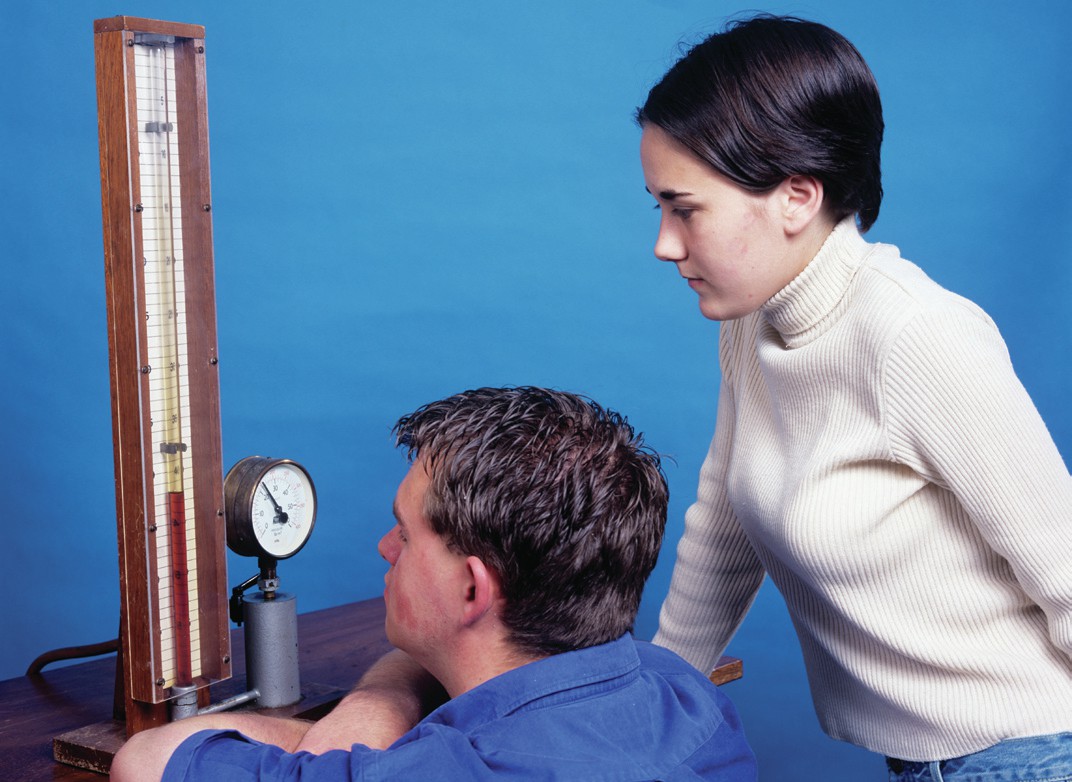
1 Boyle’s law demonstration. This equipment has a sample of gas trapped at the top of the tube above a liquid (brown). The scale markings allow the volume of this gas to be measured. To test the law, the liquid is pressurised to compress the gas, with the scale allowing volume to be recorded.
Our modern understanding of gases has its roots in seventeenth-century experiments, when Irish scientist Robert Boyle investigated the relationship between pressure and volume of a gas (1). Working with Robert Hooke, he built a pump that allowed him to change the air pressure inside a container. He measured the pressure with a barometer (see back cover) — an instrument invented in 1643 by Galileo’s assistant, Evangelista Torricelli. Air pumps became widely used at scientfic lectures at which effects of low air pressure were demonstrated.
Your organisation does not have access to this article.
Sign up today to give your students the edge they need to achieve their best grades with subject expertise
Subscribe




